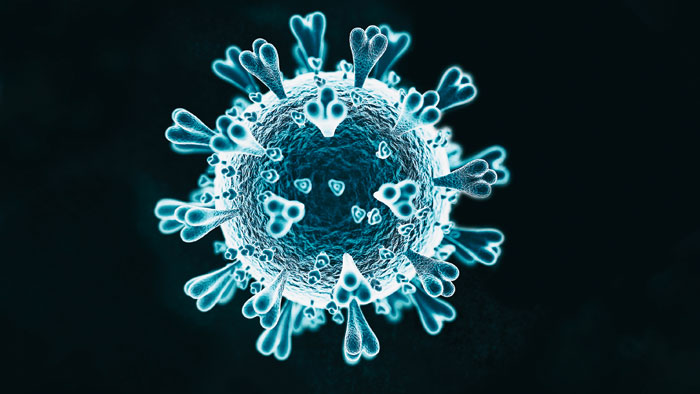Viruses are essentially “non-living” entities; they cannot thrive or multiply without the physiological support of the species they infect. Thus, they are generally considered “host” specific, a virus known to infect birds is normally not expected to infect humans. But aggressive viral evolutionary behaviour has proved such presumptions wrong. In fact, the rate at which killer viruses have jumped from other species to humans in recent times leaves us with no choice but to revisit our understanding of viral behaviour.
But, before we evaluate our capability to counter such viruses, we need to understand how they operate. Even if killer pathogens such as the recent 2019-nCov (novel coronavirus) that is causing COVID-19 (Corona-virus-disease-2019) manage to evolve, jump species and utilise our life machineries to thrive, can we not counter them by physiologically withdrawing such “life support”? The answer is a disappointing “no”; these viruses utilise the very physiological machinery that sustains our vital life processes to grow inside us.
Our immune system responds to such viral invasions with cytokines, which can not only destroy the viruses but also damage our cells. In fact, if a virus can multiply faster than the rate at which cytokines are produced, it can drive the human body to a state of hyperactive immune response in which overproduced cytokines can misfire and fatally damage our own organs. That is how the lungs are damaged when a person is infected by the 2019-nCOv virus or its close kin, the SARS virus. This results in the lung being clogged with tissue fluids, impairing oxygen exchange with the blood and leading to death. Ironically, it is the overreaction of our body’s defence system that is responsible for the disease and death associated with such viral infection.
Also, the dexterity with which influenza viruses change their coat proteins hamper the development of vaccines against them. Vaccines, the only effective way to combat such viruses, destroy the pathogen by targeting their coat proteins. However, flu viruses are almost always capable of frustrating us by emerging with entirely different coat proteins, making pre-developed vaccines ineffective. The 2019-nCov virus not only emerged with an altogether unique coat but also a “cleverly-designed” genome that made it unprecedentedly lethal.
Although the first cases of COVID-19 were detected early last December in Wuhan, it is still not clear why China did not inform the world about it until early January. More disturbing is the virus’s “super-spreading” capability (it can spread to far more people than an average flu virus) and prolonged latent period. The virus can be carried by an infected human for over two weeks without any signs of illness. This means that the virus possibly emerged long before December and spread unchecked for a substantial period of time to account for its spreading to more than 25 countries within a short period. Moreover, since the primary symptoms of the COVID-19 include fever, coughing and shortness of breath, health authorities have been looking for these symptoms while screening people. But these symptoms are not expressed during the latency period — up to 14 days after acquiring the infection — therefore, foolproof screening is impossible, even using thermal imagers. More stringent tests need to be introduced to screen the potentially infected. The official count of the infected and dead crossing 75,000 and 2,000 respectively, with no treatments available, reflects an alarming trend.
Moreover, the release of the genome sequence of 2019-nCov seems to have created more problems than it was expected to solve. First, it gave rise to widespread speculation that the virus is man-made — largely because it has combined several deadly traits of virulence with great precision. Second, a virtual battle amongst disease experts on the appropriate name of the virus perhaps reflects the lack of consensus on the way forward. Within the span of a day, two major global health organisations proposed two different names for the virus. The Coronavirus Study Group (CSG) of the International Committee on Taxonomy of Viruses wants to name it severe acute respiratory syndrome-related coronavirus 2 (SARS-CoV-2) because the new virus is actually a variant of the coronavirus that caused the alarming SARS outbreak in 2002-2003.
However, the World Health Organization (WHO) prefers to stick with 2019-nCov because it believes that associating the name of the new virus with SARS, a disease which emerged in China, would cause undue embarrassment and socio-political problems for that country.
More scientists have supported the CSG nomenclature, causing an undesirable embarrassment for WHO. Such disagreement among global health experts could also be a reflection of the frustration arising from being repeatedly outwitted by “intellectually superior” viruses. It is also possible that the readiness to believe that this virus is “man-made” reflects the self-consoling unwillingness of a part of the scientific community to accept the apparent invincibility of this virus. After all, we can manage to control “man-maneuvered” acts with more certainty than the elusive evolution strategies of such killer viruses.
Strict travel restrictions are the most effective way to contain such a virus but it is not happening on the scale it should. Moreover, given the shortcomings of the screening methods used in most international airports, the risk of further spread of this virus remains. Washing hands with soap, using hand sanitisers regularly, avoiding touching one’s eyes, nose or mouth and avoiding contact with a potentially infected person is the obvious advice for limiting the virus, which spreads through respiratory droplets, till we can clinically counter it.
However, history has been witness to the gradual waning of all global pandemics. In most cases, some people have developed immunological resistance against such pathogens and thereby helped protect others vulnerable to such attack — a phenomenon called herd immunity. Plasma from patients who recover from COVID-19 can harbour antibodies that can be used to treat other patients. There is still scope for such immuno-competent subjects to emerge and put an end to this deadly pandemic.
The writer is professor and head of the department of biotechnology and Dr B.C. Guha Centre for Genetic Engineering and Biotechnology, University of Calcutta










